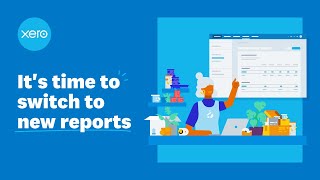How to get the most out of your superannuation at tax time
Superannuation was created so Australians could still have an income after retirement. Because we have an ageing population and the cost of living is increasing, maximising every dollar set aside this way is a priority at an individual and government level.
This tax time, take a look at ways you can leverage superannuation to minimise your tax. The benefit is that the money stays yours for the long-term, instead of going to the Government. You can apply these strategies as a PAYG professional or share them with your employees if you’re a business owner.
Tax benefits from superannuation contributions
● Concessional (before tax) super contributions
Concessional super contributions are ‘before tax’ contributions that are made by an employer on the employee’s behalf, as well as any salary sacrifices or personal contributions you make. These should be claimed on your tax return as they can be used to minimise your taxable income.
The government taxes these contributions at 15%, up to a limit of $27,500 per year (and provided your annual earnings are less than $250,000 when combined with your super contributions).
Making personal contributions can be a clever strategy for anyone with higher marginal tax rates. You can also take steps to add to your superannuation independently if your employer isn’t able to set up salary sacrificing.
Australians who earn more than $45,000 a year are set to make the most of this opportunity. At $45,000, the marginal tax rate and the Medicare Levy go up to 34.5%. Any funds you add to your super will only be taxed at 15%, so you stand to gain financially for the long term.
● Catch up super contributions
If you have less than $500,000 in your super fund, you have the option of making a ‘carry-forward’ payment.
This means you can utilise unused contribution caps from prior years to increase your tax deduction. You can access up to five years’ worth of unused concessional caps, so it is worth investigating where you stand. Talk to your accountant to find out more.
● Non-concessional contributions
A non-concessional contribution is any money added to your super from money that has already been taxed.
Adding non-concessional contributions to your spouse’s super can be a clever way to reduce your combined tax bill for the year while also saving for the future.
● The First Home Super Saver
In 2017, the federal government launched the First Home Super Saver (FHSS), allowing Australians to save for a deposit in their super funds. The benefit is that saving this way can minimise the tax you pay.
As of the end of the financial year 2022, the cap has been raised from $15,000 to $30,000 for eligible contributions. Visit the ATO website or speak to Imagine Accounting to check your eligibility.
● Low-income earners
The ATO classifies earnings under $37,000 a year as low income. A low-income superannuation tax offset ensures low-income Australians pay the lowest tax rate on super contributions. This offset goes directly into your super fund. It will match 15% of your concessional contributions, up to $500.
If you earn between $41,112 and $56,112 this financial year, you may also be eligible for super co-contributions from the government of 50 cents for each dollar. Your contributions are capped at $1,000 but provide an incentive to put additional money aside.
● High-income earners
Australians earning more than $250,000 a year are deemed high-income earners. This will result in an additional 15% tax on any concessional contributions to your super. High-income earners end up with a total of 30% total tax on concessional contributions.
While this is higher than low-income earners, it is still comfortably lower than the 47% high-income earners are taxed on their income.
Whatever your income and no matter how superannuation makes its way into your account, it is best to check the ATO website or speak to Imagine Accounting if you require assistance to figure out how to minimise tax by contributing to your super.
Contact Imagine Accounting today for an in-depth review of your superannuation contributions and a strategy to minimise tax.




